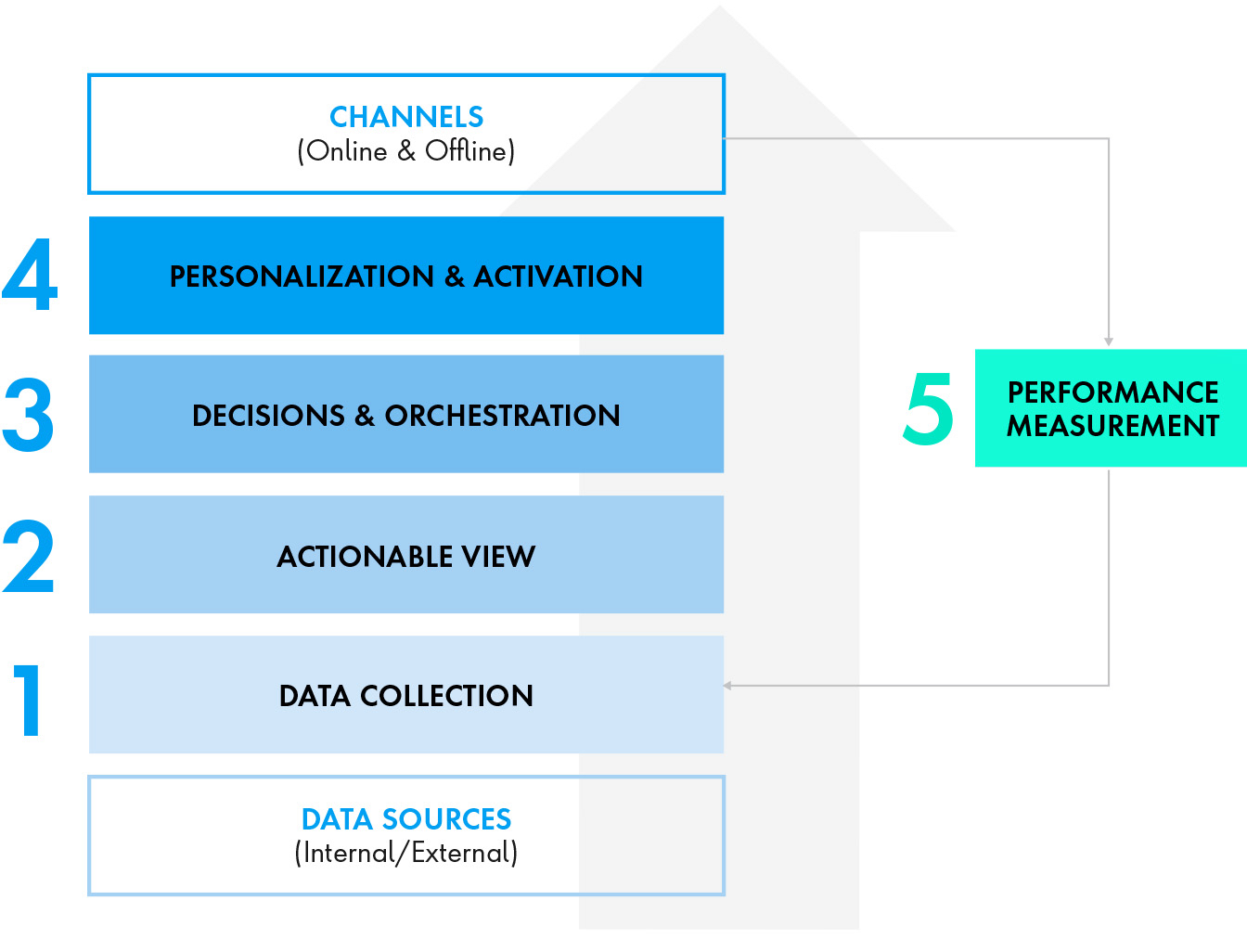As far as I can tell, most of the CDP marketplace is stuck in block #1 (Data Collection). These are high performing databases that are meant to collect activities and attributes about customers, and then apply a variety of segmentation rules. But once you purchase this, you still need to deal with data integration, capability activation, presentation and reporting. What good is having a bunch of data and segments if you can’t do anything with it? Remember the goal is personalization, at scale. And because all of this costs money, it must return value. So measurement needs to be part of the plan.
Now maybe you’re asking—even though I’ve bought (or am about to buy) a CDP, do I actually have a CDP? I’ll leave the definition up to you. Maybe the better question to ask is “are we getting the business outcomes we want out of the technologies we have”? You may have all of the underlying components. For example, you probably have a marketing automation platform, a CRM, a CMS, and other channels to activate on. Maybe you even have a Real-Time Interaction Management/decisioning platform. Not all of them may be the ideal, best-in-class solution. Or, as it is in many cases, perhaps the capabilities that already exist are highly underutilized (due to technical or organizational barriers). But here’s where you need to zoom out and have a plan.
Can I build my CDP on Salesforce?
Yes! A year ago, when we first wrote this article, Salesforce had recently acquired Evergage, which provides an amazing, machine-learning decisioning / next-best-action engine (layer 3, in the diagram above). Simultaneously, they were piloting C360 Audiences – a native-to-Lightning application (layer 2, in the diagram above). Layers 4 and 5 are already mature offerings, via a variety of products including Commerce Cloud, Marketing Cloud, Sales/Service Cloud, Experience Cloud, Datorama and Tableau. Which mix of products your CDP needs is really reflective of your business environment and use-cases.
In addition, what is really exciting is the potential for developers to build Apps on the Salesforce App Store. This will open a new data marketplace for the augmentation of first party data through access to clean rooms.
Finally, we’re expecting to see key elements of Audience Studio (DMP) functionality roll into C360 Audiences. This only makes sense, as they are the flip side of same coin (the former dealing with unknown and known individuals, the latter dealing with identified individuals). These advancements will only make it easier than ever for Salesforce customers to explore, segment, and activate their data for greater personalization.
How will we ever get started?
First, you need to establish a north star. This is a vision for what you want the personalization solution to enable. It should consider the desired business outcomes and measurements, and the use-cases should flow from there. Then you need to take an inventory of what you have to enable the solution. It’ll be a variety of technologies, data, integrations, people and process. You’ll likely identify capabilities you want to improve, and maybe don’t care for altogether. These can all go into the roadmap, and be balanced against the use-cases you need to enable. Then prioritize the use-cases to optimize time-to-value. And you’ll also need to consider what is organizationally achievable. This is undoubtably a bit of an art form.
Smaller organizations, who are standardized on the Salesforce platform and aren’t hampered by a lot of organizational silos and processes will be able to benefit more quickly from an out-of-the-box deployment. However larger, more complex organizations with a variety of data sources, mixed technology stacks and complex use-cases should plan to spend more time and money planning, aligning resources from different internal and external partners and prioritizing their spend.
By now it probably feels like you’ve picked up the Home Depot’s proverbial guide to building a deck in 3 easy steps, only to shake your head and realize it’s a whole lot more complicated than you were hoping. But that’s why you hire a good contractor.
Publicis Sapient has performed this for a number of clients. We have accelerator templates and inherent domain knowledge to help advise, sort through use-cases and help you find value quickly. Together with Salesforce, we’d be happy to partner with you through this process.







